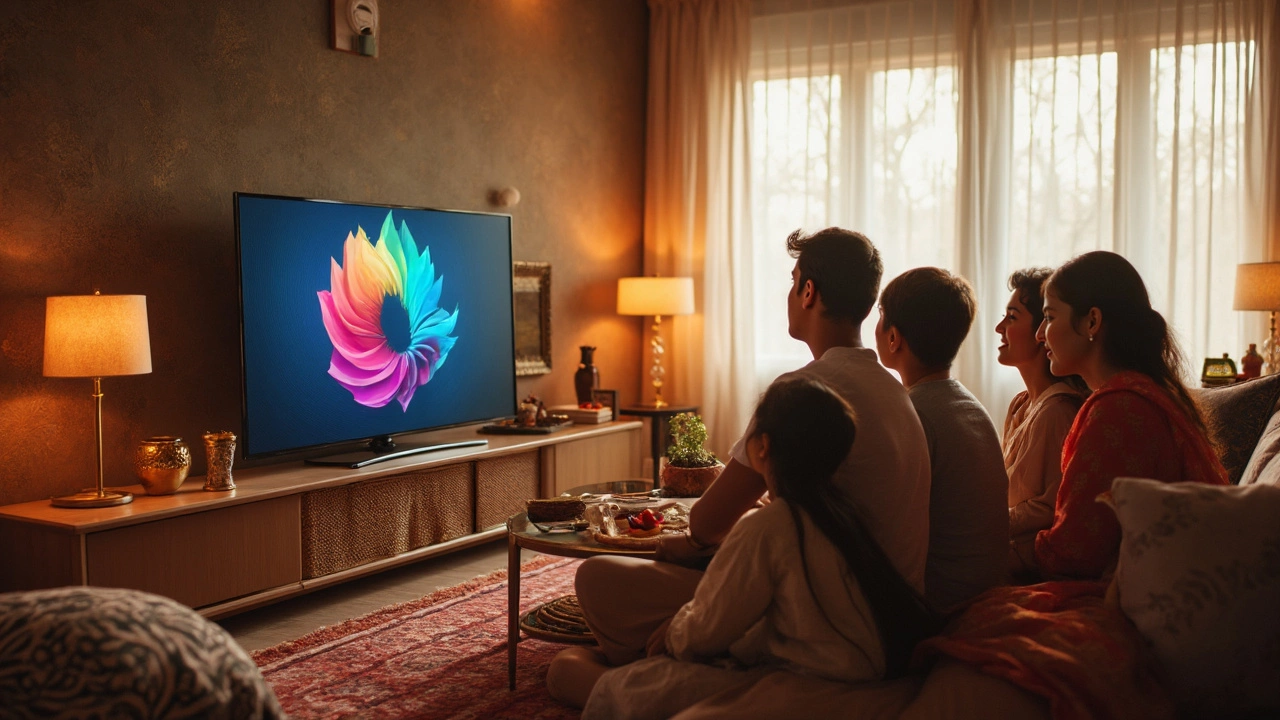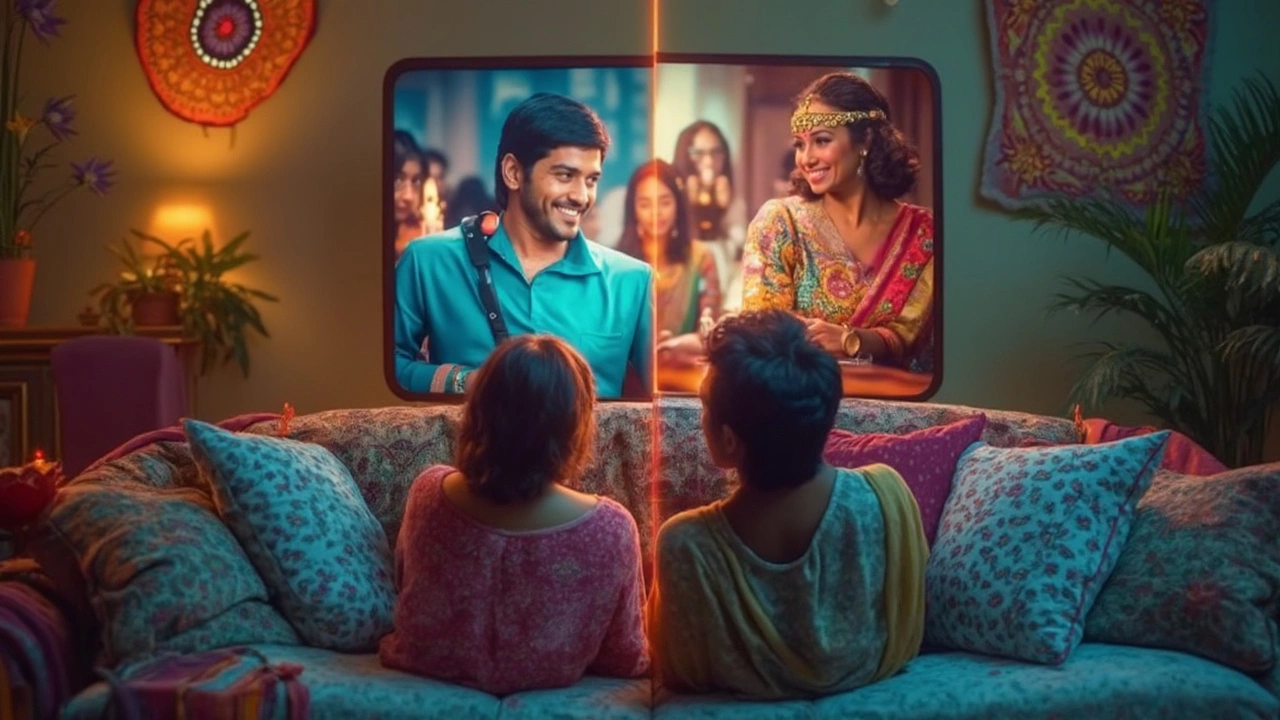
Stuck at the big store, staring at a wall of TVs? You’re not alone. Most people bounce back and forth between Vizio and Samsung, unsure if the extra bucks for Samsung are really worth it—or if Vizio’s lower price means they’re cutting corners. Choosing the right brand can totally change how your favorite show or game feels at home.
Forget the confusing model numbers and buzzwords—what really matters is how these TVs look and work in your living room. That’s where side-by-side comparisons, honest reviews, and even what your friends say come into play. There’s more to it than just the sticker price; things like remote control design, built-in apps, and even how long your TV lasts can make or break the experience.
I’ve spent hours scrolling tech forums, poking around with remotes, and grilling my buddies who either swear by Samsung or say Vizio is all you need. Turns out, there are some big differences that go way beyond what you see in ads. Ready for a straight-up, practical look at both brands? It might just save you a headache—or keep your bank account from crying.
- Comparing Picture Quality and Performance
- Smart Features and User Experience
- Price and Value for Money
- Which Brand Should You Pick?
Comparing Picture Quality and Performance
If you’re spending good money on a TV, the first thing you want is a killer picture. That’s where the Vizio vs Samsung debate really heats up. Both brands pump out bright 4K screens these days, so you won’t get a blurry mess from either. But when you look close, some differences pop out—especially if you’re picky about colors or watch a lot of movies at night.
Samsung is famous for its vivid colors right out of the box. Even their budget models use something called QLED (Quantum Dot tech), which cranks up brightness and keeps the colors sharp. This is handy in sunny living rooms or if you hate tweaking TV settings. In most shootouts, Samsung’s QLED models handle HDR (that’s high dynamic range for deeper contrast) better than any Vizio in the same price range. Movie scenes with dark shadows stay detailed, not just pitch black.
Vizio isn’t slacking, though. Their higher-end TVs (like the Vizio Quantum and P-Series) also use quantum dots but sometimes lag a bit in peak brightness. Where Vizio shines is value: for the price, they pack in a lot—local dimming, decent color, and even surprisingly fast response times. Gamers especially like Vizio’s lower input lag, which can make games feel smoother and snappier. If you mostly binge Netflix shows at night and want the most for your money, Vizio delivers a solid experience without breaking the bank.
To give you a quick side-by-side, here’s a real-world comparison of both 2024 brand flagships, so you can see what matters most to you:
| Feature | Samsung QN90C QLED | Vizio P-Series Quantum X |
|---|---|---|
| Peak Brightness (nits) | 1,850 | 1,300 |
| Local Dimming Zones | 576 | 210 |
| Input Lag (Game Mode) | 9.2ms | 7.9ms |
| Color Gamut (DCI-P3) | 96% | 94% |
Quick tip: If you watch a lot of daytime sports or want the liveliest possible picture, that higher Samsung brightness is great. But if your room isn’t super bright, Vizio’s lower price and quick response can give you most of what you need, especially for gaming or movie nights.
Smart Features and User Experience
Here’s where things get interesting. When you turn on a Vizio or Samsung TV, you’ll notice some real differences in how they handle apps, voice controls, and even basic remote clicks. Samsung uses its own Tizen OS—this system is super smooth and quick, and it rarely glitches or makes you wait forever for an app to load. There’s a ton of apps right out of the box, from Netflix and Hulu to more niche streaming services. Voice assistants like Bixby (Samsung’s own), Alexa, and Google Assistant are baked in, so you can control the TV by talking, not just pushing buttons.
Vizio’s "SmartCast" platform gets points for being simple and easy—especially if you mostly use a few popular apps. It includes Chromecast built-in, which means you can send stuff from your phone to your TV with hardly any setup. But here’s the thing: while SmartCast looks clean, it can be a bit slower than Samsung’s system, especially when launching apps or scrolling around. Its app store isn’t as deep, and sometimes you’ll need your phone to find shows or movies that aren’t right there on the TV.
Remote controls are a hot topic. Samsung remotes are pretty minimal, with fewer buttons and a sleeker feel—some even have solar charging, so you’re not scrambling for batteries. Vizio remotes are bulkier, with more classic button layouts, and usually skip fancier features like backlights or voice control unless you shell out for a higher-end model.
- Samsung Tizen OS: Faster, more apps, polished look, reliable voice control.
- Vizio SmartCast: Simple, Chromecast built in, works well if you do most stuff from your phone.
- Samsung remote: Sleek, sometimes solar-powered, supports voice search.
- Vizio remote: Bigger, more buttons, less fancy features.
If you’re someone who hates fumbling with extra gadgets and just wants a seamless experience, Samsung often takes the prize in this department. For folks already using smart speakers or streaming mostly from a mobile, Vizio can work just fine. But for most people, if smart TV features are your thing, Samsung usually feels a step ahead in daily use.

Price and Value for Money
It’s no secret: Vizio usually wins when it comes to sticker price. Walk into any electronics store and you’ll see Vizio TVs lined up with price tags that look way friendlier than Samsung’s. But what do you actually get for your money? Here’s where things get interesting.
Vizio’s main selling point is giving you most of the latest stuff—think 4K, Dolby Vision, big sizes—without wrecking your wallet. Their M-Series and V-Series lines often come in under what Samsung charges for similar sizes. But with Samsung, you’re paying extra for things like a more polished design, stronger software, and (sometimes) better hardware longevity.
Samsung also throws in its own QLED tech for brighter colors and more punch in daylight. Those QLED panels usually push the price up by a couple hundred bucks compared to Vizio’s top models, which lean on Quantum Color but don’t quite match Samsung’s level of brightness or contrast. That doesn’t mean Vizio is a slouch—it’s just that Samsung’s aiming a bit higher, and you pay for it.
The chart below shows average 2025 prices for popular 55" and 65" models from both brands. (Prices snagged from Best Buy in May 2025.)
| Brand | Model | Size | Average Price (USD) |
|---|---|---|---|
| Vizio | M-Series Q6 | 55" | $449 |
| Vizio | M-Series Q6 | 65" | $599 |
| Samsung | Q60C QLED | 55" | $678 |
| Samsung | Q60C QLED | 65" | $898 |
Now, if you literally just want a decent 4K screen that works, Vizio is hard to beat for value. But here are a few things to factor in before swiping your card:
- Software Updates: Samsung consistently updates its Tizen OS, which keeps smart features fresh and bugs under control. Vizio updates come slower, and sometimes not at all for older models.
- Warranty and Support: Vizio’s warranty is solid for a year, but Samsung is often a little better at customer service—handy if you need help down the line.
- Resale Value: Samsung smart TVs keep their value longer if you like to sell or trade up every couple years.
The takeaway? Vizio is a killer deal if your number one priority is price. But Samsung’s steeper cost goes toward better software, richer features, and usually fewer headaches over the long haul. Think about how much those things matter to you before making a call.
Which Brand Should You Pick?
This is where things get real. If you’re debating between a Vizio and a Samsung, you honestly want a brand that checks your personal boxes—whether it's gaming, streaming, a killer picture, or just something that won’t break after a couple of years. Here’s some straight, no-nonsense info to help you decide.
If you want the absolute best all-around performance, Samsung usually comes out on top. Their OLED and Neo QLED models have awesome color, crazy-deep blacks, and ultra-bright screens. Samsung really shines when you want a set-and-forget device—their Tizen smart platform is smooth, easy to use, and rarely glitches. They also get updates longer, so your TV won’t feel ancient in two years.
But what if your budget’s tight? Vizio gives you more screen for your money, especially in their mid-range and value models. Their Quantum series actually punches above its price tag, with great contrast and solid HDR. If you don’t care about having every single bleeding-edge feature, or you usually just use a streaming stick anyway, Vizio can make a lot of sense.
Let’s put key features side by side:
| Feature | Samsung | Vizio |
|---|---|---|
| Smart Platform | Tizen (more stable, better apps) | SmartCast (improving, but can lag) |
| Display Tech | QLED, OLED, Neo QLED | Quantum, LED |
| Price Range (55” 4K) | $600–$1,500+ | $350–$900 |
| Firmware Updates | Frequent, longer support | Less frequent |
| Gaming Features | Great (120Hz, low lag, HDMI 2.1) | Good (some 120Hz, less consistent) |
| Customer Support | More reliable | Mixed customer reviews |
If you stream a ton or hate fussing with settings, a Samsung is the safer bet. Gamers should double-check Vizio’s model specs—some have full 120Hz, but others don’t pull it off as smoothly as Samsung. If you just want a big screen for movie nights, Vizio often costs way less, and you still get solid picture quality.
- Tip: Shopping at a warehouse club or waiting for holiday deals can shave hundreds off either brand, especially for 65” and bigger models.
- If you use an Apple TV, Roku, or Fire Stick for everything, the smart platform matters less—Vizio might do just fine.
- For wall-mounting, both brands support standard VESA, but Samsung sets are sometimes slimmer and easier to hang.
So, which one’s for you? If reliability, better software, and premium performance are must-haves, Samsung is hard to beat—just be ready to spend. For a wallet-friendly setup with surprisingly good quality, Vizio delivers, as long as you pick one of their top recent models. Either way, choosing the right smart TV really comes down to what feature matters most on your couch.